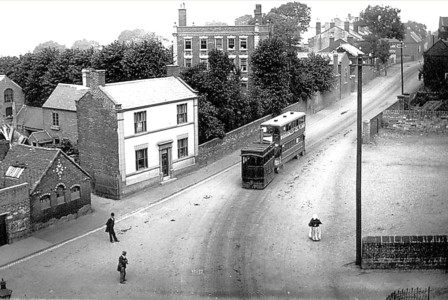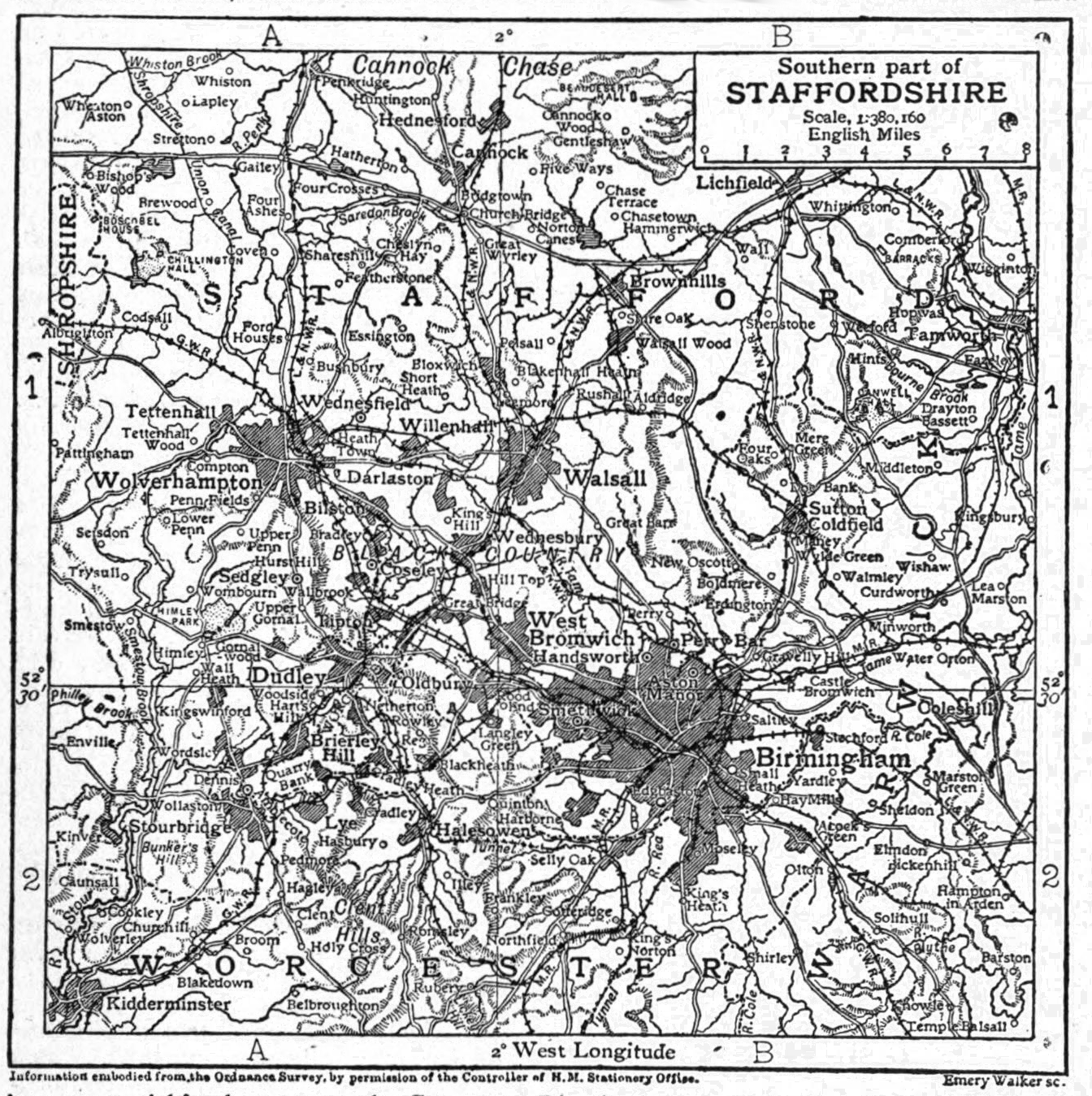|
Sarah Hughes Brewery
Sarah Hughes Brewery in Sedgley Sedgley is a town in the north of the Metropolitan Borough of Dudley, in the West Midlands (county), West Midlands, England. Historic counties of England, Historically part of Staffordshire, Sedgley is on the A459 road between Wolverhampt ..., in the Black Country of England, dates from the Victorian era. It was bought by Sarah Hughes in 1921 and brewed until 1957, before re-opening in 1987. History The Beacon Hotel and brew house dates from the Victorian era being built around 1850. In 1865 the licensee was Abraham Carter and the hotel was later run by his widow, Nancy. James Fellows, a brewer, was licensee from 1910-1921, before the business was bought by Sarah Hughes. Sarah ran the brewery until her death in 1951. Subsequently, her son, Alfred operated the brewery until 1957 when brewing ceased. It was reopened in 1987 by a grandson of Sarah Hughes. Location The brewery is at 129 Bilston Street, Sedgley. It is attached to the B ... [...More Info...] [...Related Items...] OR: [Wikipedia] [Google] [Baidu] |
Sedgley
Sedgley is a town in the north of the Metropolitan Borough of Dudley, in the West Midlands (county), West Midlands, England. Historic counties of England, Historically part of Staffordshire, Sedgley is on the A459 road between Wolverhampton and Dudley, and was formerly the seat of an ancient Manorialism, manor comprising several smaller villages, including Gornal, West Midlands, Gornal, Gospel End, Woodsetton, Dudley, Woodsetton, Ettingshall, Coseley, and Brierley (now Bradley, West Midlands, Bradley). In 1894, the manor was split to create the Sedgley Urban District, Sedgley and Coseley Urban District, Coseley Urban district (Great Britain and Ireland), urban districts, the bulk of which were later merged into the Dudley County Borough in 1966. Most of Sedgley was absorbed into an expanded County Borough of Dudley in 1966, with some parts being incorporated into Seisdon and Wolverhampton. Since 1974 it has been part of the Metropolitan Borough of Dudley. History The p ... [...More Info...] [...Related Items...] OR: [Wikipedia] [Google] [Baidu] |
West Midlands (county)
West Midlands is a metropolitan county in the West Midlands Region, England, with a 2021 population of 2,919,600, making it the second most populous county in England after Greater London. It was created in 1974 by the Local Government Act 1972, from parts of Staffordshire, Worcestershire and Warwickshire. The county is a NUTS 2 region within the wider NUTS 1 region of the same name. It embraces seven metropolitan boroughs: the cities of Birmingham, Coventry and Wolverhampton, and the boroughs of Dudley, Sandwell, Solihull and Walsall. The county is overseen by the West Midlands Combined Authority, which covers all seven boroughs and other non-constituent councils, on economy, transport and housing. Status The metropolitan county exists in law, as a geographical frame of reference, and as a ceremonial county. As such it has a Lord Lieutenant. and a High Sheriff. Between 1974 and 1986, the West Midlands County Council was the administrative body covering the county; t ... [...More Info...] [...Related Items...] OR: [Wikipedia] [Google] [Baidu] |
England
England is a country that is part of the United Kingdom. It shares land borders with Wales to its west and Scotland to its north. The Irish Sea lies northwest and the Celtic Sea to the southwest. It is separated from continental Europe by the North Sea to the east and the English Channel to the south. The country covers five-eighths of the island of Great Britain, which lies in the North Atlantic, and includes over 100 smaller islands, such as the Isles of Scilly and the Isle of Wight. The area now called England was first inhabited by modern humans during the Upper Paleolithic period, but takes its name from the Angles, a Germanic tribe deriving its name from the Anglia peninsula, who settled during the 5th and 6th centuries. England became a unified state in the 10th century and has had a significant cultural and legal impact on the wider world since the Age of Discovery, which began during the 15th century. The English language, the Anglican Church, and Engli ... [...More Info...] [...Related Items...] OR: [Wikipedia] [Google] [Baidu] |
Mild Ale
Mild ale is a type of ale. Modern milds are mostly dark-coloured, with an alcohol by volume (ABV) of 3% to 3.6%, although there are lighter-hued as well as stronger milds, reaching 6% abv and higher. Mild originated in Britain in the 17th century or earlier, and originally meant a young ale, as opposed to a "stale" aged or old ale. Mild experienced a sharp decline in popularity in the 1960s, and was in danger of completely disappearing, but the increase of microbreweries has led to a modest renaissance and an increasing number of milds (sometimes labelled "dark") being brewed. The Campaign for Real Ale has designated May as Mild Month. In the United States, a group of beer bloggers organised the first American Mild Month for May 2015, with forty-five participating breweries across the country. History "Mild" was originally used to designate any beer which was young, fresh or unaged and did not refer to a specific style of beer. Thus there was Mild Ale but also Mild Porter and e ... [...More Info...] [...Related Items...] OR: [Wikipedia] [Google] [Baidu] |
Bitter Ale
Bitter is an English style of pale ale that varies in colour from gold to dark amber, and in strength typically from 3% to 5.5% alcohol by volume. History The term "bitter" has been used in England to describe pale ale since the early 19th century. Although brewers used the term "pale ale", before the introduction of pump clips, customers in public houses would ask for "bitter" to differentiate it from mild ale; by the end of the 19th century, brewers had begun to use the term as well. During the 20th century, bitter became the most popular type of draught beer sold in British pubs and has been described as "the national drink of England". In Scotland, bitter is known as either "light" or "heavy" depending on the strength, colour and body. Bitter is traditionally cask conditioned and either dispensed by gravity through a tap in the cask or by a beer engine at "cellar temperature" of 11° to 14° Celsius (50° to 55° Fahrenheit). The popularity of craft brewing in North A ... [...More Info...] [...Related Items...] OR: [Wikipedia] [Google] [Baidu] |
Black Country
The Black Country is an area of the West Midlands county, England covering most of the Metropolitan Boroughs of Dudley, Sandwell and Walsall. Dudley and Tipton are generally considered to be the centre. It became industrialised during its role as one of the birth places of the Industrial Revolution across the English Midlands with coal mines, coking, iron foundries, glass factories, brickworks and steel mills, producing a high level of air pollution. The name dates from the 1840s, and is believed to come from the soot that the heavy industries covered the area in, although the 30-foot-thick coal seam close to the surface is another possible origin. The road between Wolverhampton and Birmingham was described as "one continuous town" in 1785. Extent The Black Country has no single set of defined boundaries. Some traditionalists define it as "the area where the coal seam comes to the surface – so West Bromwich, Coseley, Oldbury, Blackheath, Cradley Heath, Old Hill, B ... [...More Info...] [...Related Items...] OR: [Wikipedia] [Google] [Baidu] |
Breweries In England
A brewery or brewing company is a business that makes and sells beer. The place at which beer is commercially made is either called a brewery or a beerhouse, where distinct sets of brewing equipment are called plant. The commercial brewing of beer has taken place since at least 2500 BC; in ancient Mesopotamia, brewers derived social sanction and divine protection from the goddess Ninkasi. Brewing was initially a cottage industry, with production taking place at home; by the ninth century, monasteries and farms would produce beer on a larger scale, selling the excess; and by the eleventh and twelfth centuries larger, dedicated breweries with eight to ten workers were being built. The diversity of size in breweries is matched by the diversity of processes, degrees of automation, and kinds of beer produced in breweries. A brewery is typically divided into distinct sections, with each section reserved for one part of the brewing process. History Beer may have been known in Neolith ... [...More Info...] [...Related Items...] OR: [Wikipedia] [Google] [Baidu] |
British Companies Established In 1921
British may refer to: Peoples, culture, and language * British people, nationals or natives of the United Kingdom, British Overseas Territories, and Crown Dependencies. ** Britishness, the British identity and common culture * British English, the English language as spoken and written in the United Kingdom or, more broadly, throughout the British Isles * Celtic Britons, an ancient ethno-linguistic group * Brittonic languages, a branch of the Insular Celtic language family (formerly called British) ** Common Brittonic, an ancient language Other uses *''Brit(ish)'', a 2018 memoir by Afua Hirsch *People or things associated with: ** Great Britain, an island ** United Kingdom, a sovereign state ** Kingdom of Great Britain (1707–1800) ** United Kingdom of Great Britain and Ireland (1801–1922) See also * Terminology of the British Isles * Alternative names for the British * English (other) * Britannic (other) * British Isles * Brit (other) * Briton (d ... [...More Info...] [...Related Items...] OR: [Wikipedia] [Google] [Baidu] |
Food And Drink Companies Established In 1921
Food is any substance consumed by an organism for nutritional support. Food is usually of plant, animal, or fungal origin, and contains essential nutrients, such as carbohydrates, fats, proteins, vitamins, or minerals. The substance is ingested by an organism and assimilated by the organism's cells to provide energy, maintain life, or stimulate growth. Different species of animals have different feeding behaviours that satisfy the needs of their unique metabolisms, often evolved to fill a specific ecological niche within specific geographical contexts. Omnivorous humans are highly adaptable and have adapted to obtain food in many different ecosystems. The majority of the food energy required is supplied by the industrial food industry, which produces food with intensive agriculture and distributes it through complex food processing and food distribution systems. This system of conventional agriculture relies heavily on fossil fuels, which means that the food and agricultural ... [...More Info...] [...Related Items...] OR: [Wikipedia] [Google] [Baidu] |


.jpg)



